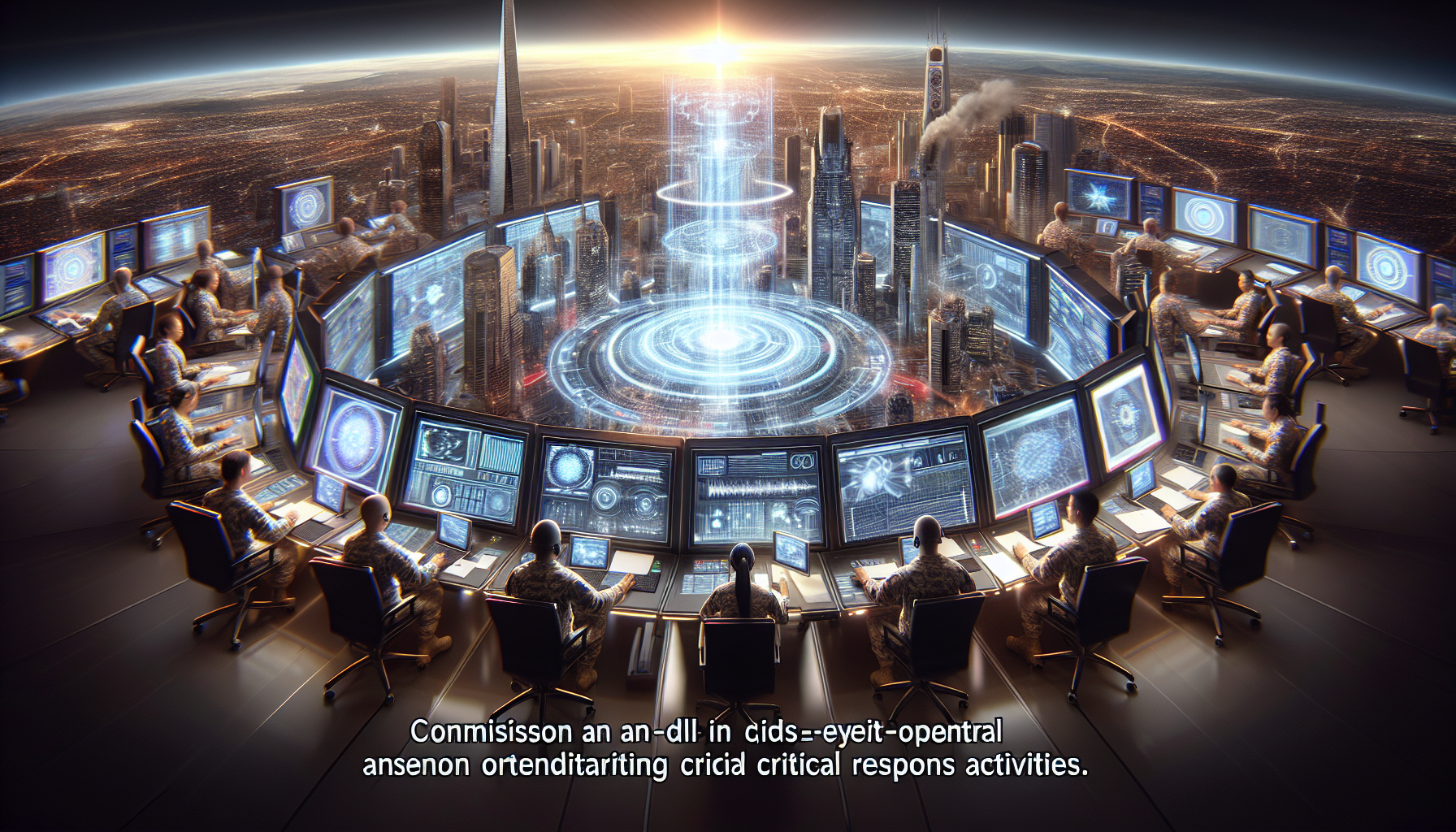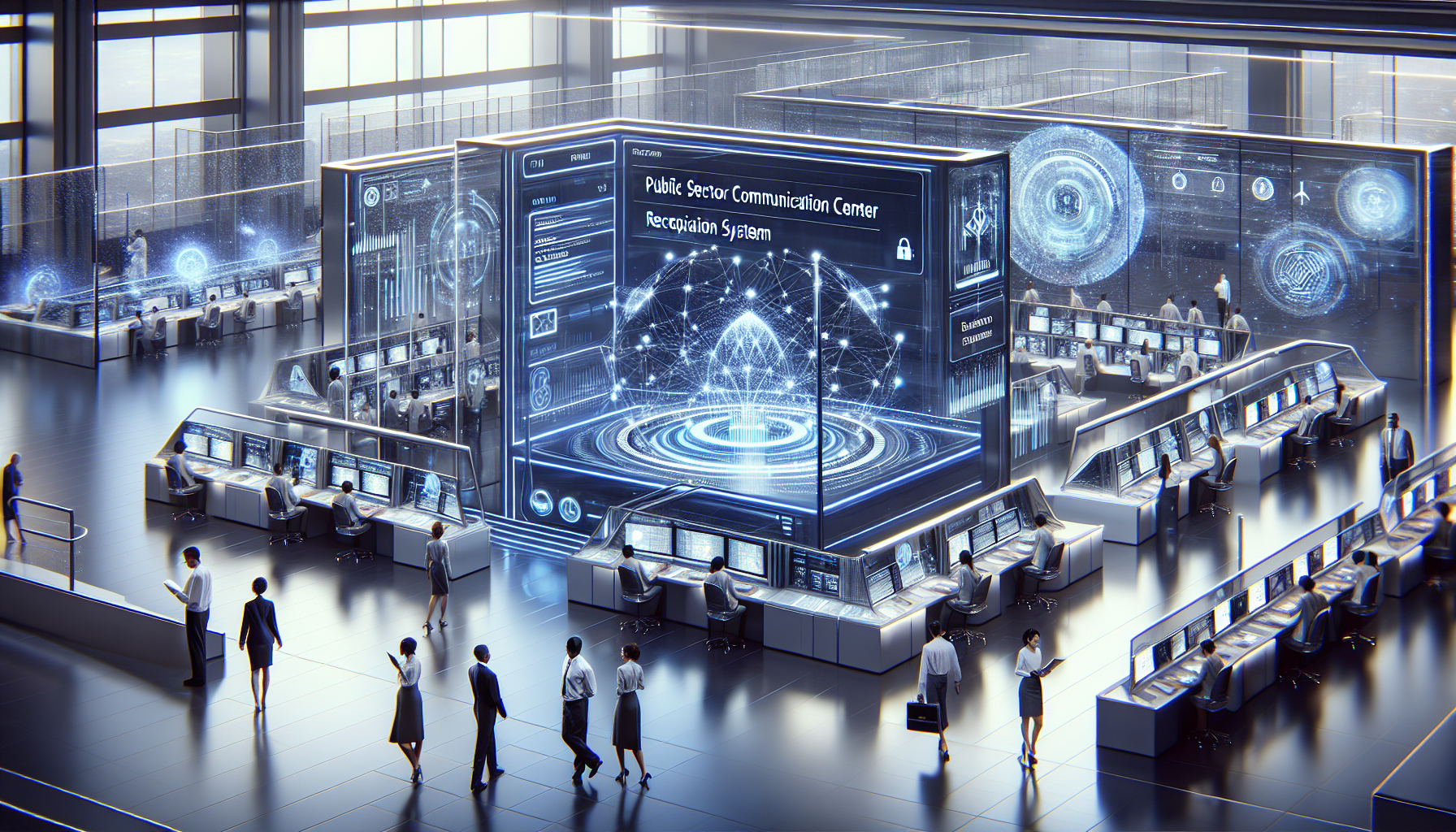
Operating in the 21st century comes with its fair share of challenges for the public sector. Among them is effective crisis management. Traditional crisis management often involves stretched resources coupled with high-pressure environments. This is where Artificial Intelligence (AI)-powered receptionists come in.

AI receptionists, also known as virtual assistants, utilise key features of AI such as machine learning and natural language processing to improve and streamline services in the public sector. They can handle an array of tasks from answering phone calls and emails to scheduling meetings, freeing up human resources to handle more complex tasks.
In a crisis situation, their value only amplifies. AI-powered receptionists are able to handle large volumes of emergency calls and process them accurately. Additionally, they can provide rapid responses to simple yet critical inquiries, allowing the focus to stay on resolving the crisis. AI receptionists ensure that communication flows seamlessly, highlighting their importance in times of emergency.
How exactly does this translate into operation efficiency and improved crisis management? Allow us to shed some light on the topic. By leveraging the capabilities of AI receptionists, public sector entities can not only greatly enhance their response times but also handle resource allocation more effectively. In fact, public sector organizations utilizing AI have found a notable improvement in their crisis management capabilities.
Undeniably, AI receptionists are transforming crisis management in the public sector. Through their ability to quickly assess and process information, these AI tools are reshaping how public organizations react and adapt to crises. Understand more about how AI receptionists can revolutionize emergency responses by delving deeper into our subsequent sections.
Effective crisis management in the public sector often relies heavily on effective communication. When emergencies arise, a sudden surge in incoming calls can overwhelm human receptionists, leading to a significant delay or even total breakdown in communication. This is where AI receptionists can play a crucial role in maintaining uninterrupted communication, even during high-stress situations.
Unlike human receptionists, AI receptionists are not undermined by fatigue, emotional stress, or the sheer volume of calls and queries. Thanks to advances in Natural Language Processing (NLP) and Machine Learning (ML), these AI-powered solutions can easily handle multiple incoming requests concurrently, ensuring that every call or inquiry is attended to promptly and appropriately.
Moreover, not only can AI receptionists handle high volumes of calls, they can also accurately categorize calls based on the urgency and nature of the queries, directing them to the appropriate personnel or department. This automation process is vital during an emergency scenario, where every second counts. For instance, critical situations like a natural calamity or a major security breach can be swiftly escalated to high-ranking officials, while less urgent matters can be addressed by other staff members.
AI receptionists also come equipped with disaster recovery features. They are generally hosted on multiple servers and can quickly switch to another server if one goes down. This resilience against system failures ensures that they remain available 24/7, even during crises that could potentially disrupt infrastructure.
In conclusion, AI receptionists help to significantly improve crisis management in the public sector by ensuring that uninterrupted call handling is maintained during emergencies. By reducing call delays and ensuring that critical calls receive priority, this technology can help to maximize the efficiency and effectiveness of public sector emergency response teams. The evolution of AI in enhancing crisis management is a prime example of how technology can be leveraged to protect and serve the public during times of need.
In the face of a crisis, time is of the essence. Swift responses and data-driven decisions are the keys to contain a situation effectively. Herein lays the utility of AI Receptionists, with their capacity to perform real-time data integration and provide immediate response.

AI Receptionists are intelligent, automated systems that can efficiently integrate with existing database systems in the public sector. These AI systems utilize data integration to pull relevant, live data feeds from diverse sources such as climate tracking systems, public health databases, and emergency services reports.
Unlike manual processes, these smart systems can sort and analyze large volumes of data in a matter of seconds. The AI does not merely present raw figures, but interprets them, enabling real-time updates to enhance public sector response during a crisis.
Moreover, AI Receptionists can generate predictive models by identifying patterns in the collected data, offering insights into what might occur in the coming hours or days. This predictive ability allows public sector agencies to be more proactive in their strategies, potentially mitigating damage and loss.
AI Receptionists are also capable of facilitating communication in crisis situations. They can instantly relay updates and recommendations to concerned parties, whether that be decision makers in the government, emergency response teams, or the public. This ensures that everyone stays informed and can make appropriate decisions based on the latest data.
To summarize, AI Receptionists play a critical role in crisis management within the public sector. By incorporating real-time data integration and intelligent analytics, these AI systems are enhancing the speed, foresight, and effectiveness of response efforts.
```In the era of digital technology, crisis management undergoes significant transformation with the deployment of AI Receptionists in the public sector. One key advantage they bring to the table is the ability to revolutionize access to public services, while promoting inclusivity across diverse populations.
AI receptionists, equipped with advanced language processing capabilities, have the potential to bridge communication gaps that often hamper effective crisis management. By supporting multiple languages, they ensure that language barriers do not hinder access to important information, reaffirming people's entitlement to public services irrespective of their cultural or linguistic backgrounds. IBM’s Watson Text-to-Speech is an example of an AI that can provide seamless interactive experiences for users in their native language.
For people with auditory impairments or those who prefer textual communication, the text-to-speech functions of AI receptionists are beneficial. By giving public notifications, warnings, instructions, and responses in an intelligible text format, these advanced virtual entities ensure everyone is included and well-informed during a crisis situation. Google Chrome’s Speech-to-Text feature illustrates how text-to-speech functions enable clear and concise communication.
Moreover, AI receptionists allow public sector institutions to cater to the overall needs of multicultural and differently-abled citizens in real-time, which is a monumental step in proactive crisis management. Ultimately, this eliminates undue stress and confusion that can exacerbate the crisis.
In conclusion, the implementation of AI receptionists in the public sector not only improves crisis management but also profoundly tackles access and inclusivity concerns. By adapting to the communication needs of diverse populations, these AI systems mark a new epoch in public service provision where everyone is equally served, respected and heard. AI receptionists, therefore, are not a mere technological upgrade; they have the capacity to transform public sector institutions into more empathetic, efficient, and inclusive establishments.
In times of crisis, one of the most critical aspects is communication — clear, timely, and accurate. A moment’s delay can heighten the severity of a crisis, and this is where AI receptionists come into play. By automating comprehensive, 24/7, and error-free communication, AI-powered receptionists have shown profound potential in ramping up crisis management in the public sector. Let's delve into a couple of real-life case studies that underline this potential.

In 2019, the city of Los Angeles piloted an AI-powered receptionist called Chip. Chip was tasked with handling public inquiries during the fire season (June through September), one of the most severe crisis periods for the city. Using real-time data from drones and IoT sensors, Chip delivered accurate, up-to-the-minute status updates, evacuation instructions, and safety measures to the public — effectively reducing panic and enabling structured crises responses. This timely and efficient communication marked a significant leap in the city's crisis management capacities.
On another end of the globe, the Singapore Foreign Ministry has employed an AI receptionist system to streamline communication during international crises involving Singaporean citizens. In 2020, during the sudden global lockdown following the rise of the COVID-19 pandemic, the AI system was conditional to efficiently managing the massive influx of calls and inquiries from worried citizens stranded overseas. The AI system quickly triaged calls based on urgency, enabling the officials to provide immediate assistance to the most critical cases, thereby substantially improving overall crisis-response efficiency.
These real-world applications emphasize the untapped potential of AI receptionists in enhancing crisis management. By taking charge of communication, these AI systems free up human resources for other critical tasks, augment their efficiency, and ensure a more timely and effective response to crises.
Given their proven benefits and the evolving nature of challenges in our societies, the future holds even more extensive applicabilities, improvements, and implementations for AI receptionists in crisis management of the public sector.
As we examine the future of public sector communication, we see an increasingly significant role for AI receptionists. As the public sector faces challenging demands from an evolving world, these sophisticated AI-based systems offer solutions that not only augment crisis management but also enhance communication strategies in various aspects.
One particularly impressive benefit is the capability to manage large amounts of data and inquiries simultaneously, something that no human receptionist can match. This leads to faster and more efficient communication, especially during a crisis. IBM's findings on AI further support this by emphasizing how AI can manage data at unprecedented speeds and volumes. In turn, this allows the public sector to swiftly respond to crisis situations, thereby fostering a resilient community.
Moreover, with continuous advancements in Natural Language Processing (NLP), AI receptionists will be able to understand and interpret various languages, accents, and dialects. This ensures that every citizen, regardless of their language proficiency, can communicate their needs and concerns effectively. This, in itself, is an important step towards fostering inclusivity and fairness in public services.
Looking ahead, the integration of AI receptionists in the public sector will usher in an era of proactive crisis management. Predictive analytics, a subfield of AI, can help forecast potential crisis situations based on patterns and trends in data. This paves the way for proactive measures, giving governments the upper hand in handling and preventing crises.
In conclusion, AI receptionists will not only improve crisis management in the public sector but will revolutionize the way in which the public sector interacts with its citizens. Embracing these advancements is not just an option — it is a necessity for the transformation and modernization of public sector communication.
Start your free trial for My AI Front Desk today, it takes minutes to setup!








